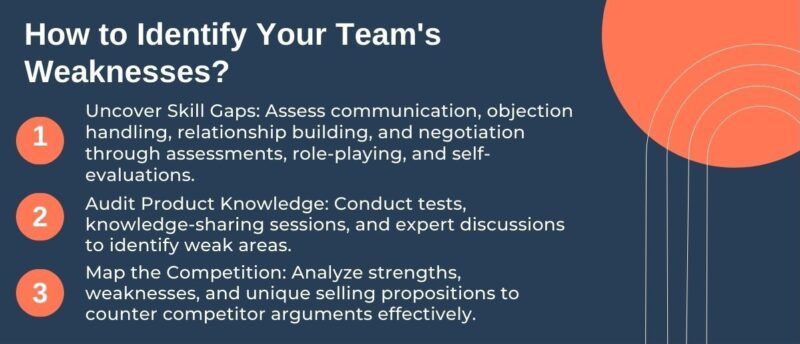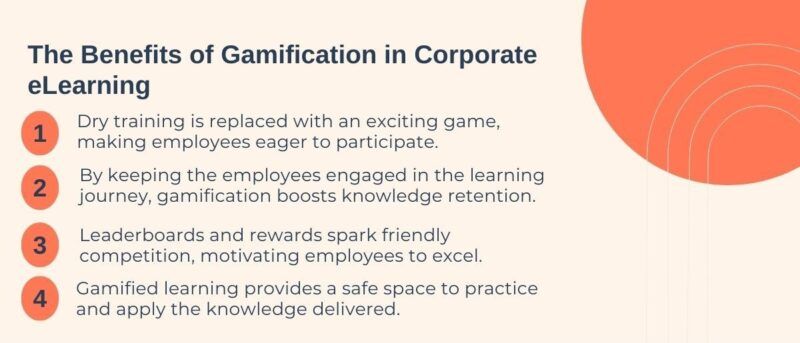
How Can Leadership Development Improve Employee Engagement?
Investing in leadership development with eLearning empowers leaders to motivate and inspire their teams. Techniques like microlearning, scenario-based training, and storytelling can hone communication, creativity, and strategic decision-making skills. This leads to a more engaged workforce, boosting productivity and innovation.
Your workplace is an environment where employees consistently come to work feeling energized, motivated, and overflowing with fresh ideas. Sounds pretty good, right? Well, the key to unlocking this potential lies in leadership development.
We are living in a competitive business landscape, where a strong leadership team is no longer a luxury but a necessity. Good leaders are the driving force behind a company’s success, influencing everything from employee morale and productivity to innovation and strategic decision making. Think about it: motivated employees who feel valued and heard are more likely to go the extra mile, contributing to a thriving and productive work environment. But what exactly makes a good leader?
Here are a few key qualities that separate the average from the exceptional:
Employee motivation – Great leaders inspire and ignite a fire within their team members. They understand individual strengths and weaknesses, fostering a sense of purpose and achievement.

Effective communication – Clear and concise communication is paramount. Leaders who can articulate goals, expectations, and feedback effectively build trust and create a more collaborative environment.
Creativity and innovation – Leaders who embrace fresh ideas and encourage calculated risks can propel their teams and companies forward. They foster a culture of experimentation and learning that can lead to groundbreaking solutions.
Strategic decision making – Leaders need to see the big picture while also being able to navigate the complexities of day-to-day operations. They can analyze data, weigh options, and make sound decisions that align with long-term goals.
Now, you might be wondering: how can you develop these essential leadership qualities in your employees or hone them for yourself?
Amazing Leadership Development Tips That Leverage The Power Of eLearning
1. Sharpen Soft Skills With Microlearning
Strong leadership hinges on soft skills like communication, empathy, and conflict resolution. Traditional training can feel overwhelming, but microlearning offers a game-changer. These bite-sized learning modules, delivered through mobile devices or short online sessions, are perfect for busy schedules. Employees can focus on specific skills like active listening or providing constructive feedback, leading to gradual improvement.
Training example: Imagine an interactive microlearning module that uses real-world scenarios with branching narratives. The learner, playing the role of a leader, encounters a team member struggling with a task. The module prompts different communication styles, allowing the learner to experience the impact of their choices on team morale and performance.
2. Foster Team Networks Through Collaborative Learning
Leadership thrives on strong relationships within the team. Encourage peer-to-peer learning by fostering a collaborative eLearning environment. This could involve online discussion forums where leaders can share best practices, troubleshoot challenges, and learn from each other’s experiences. Gamification, with points and leaderboards, can add a fun element and encourage participation.
Training example: Develop an online platform with case studies of successful leadership strategies. Leaders can analyze the cases and discuss their application within their own teams. Gamification elements like team points awarded for insightful discussions or innovative solutions can further incentivize collaboration.

3. Cultivate Discipline With Scenario-Based Learning
Effective leaders need to be adaptable and decisive, especially under pressure. Scenario-based learning provides a safe space for leaders to practice their decision-making skills in a simulated environment. These scenarios can mirror real-world challenges, like managing a crisis or motivating a struggling team member.
Training example: Create interactive scenarios where learners take on the role of a leader facing various challenges. These scenarios can incorporate generative AI to react dynamically to the learner’s choices, providing a realistic and personalized learning experience.
4. Spark Creativity With Storytelling
Stories have the power to inspire and engage. Incorporate storytelling techniques into your eLearning programs to illustrate leadership principles and showcase real-world examples of successful leaders.
Training example: Develop a series of eLearning modules that feature captivating stories of well-known leaders who overcame obstacles and achieved remarkable success. These stories can be interactive, allowing learners to delve deeper into the leader’s thought processes and decision-making strategies.
5. Enhance Communication With Responsive eLearning Design
Effective leaders need to be adaptable communicators who can tailor their message to their audience. Your eLearning platform should reflect this by being responsive and accessible across a variety of devices. Mobile learning allows employees to access leadership training on the go, while responsive design ensures the content fits seamlessly on any screen size.
Focus on:
- Clean and concise language with clear learning objectives.
- Utilize multimedia elements like videos and infographics to diversify content and enhance understanding.
6. Infuse Innovation With Interactive Learning Activities
Leadership thrives on fresh ideas and a willingness to explore new possibilities. Incorporate interactive activities like quizzes, polls, and simulations into your eLearning modules. These activities can encourage learners to think critically and experiment with different approaches.
Training example: Design a module on strategic decision making that presents learners with a complex business challenge. They can use data analysis tools and simulations to explore different scenarios and their potential outcomes.
7. Cultivate Continuous Learning With Personalized Learning Paths
Great leaders are lifelong learners. Create personalized learning paths within your eLearning platform, allowing employees to tailor their development based on their individual needs and goals.
Training example: Develop an assessment tool that identifies an employee’s strengths and weaknesses in key leadership areas. The platform can then recommend specific learning modules, microlearning courses, or even mentor connections to address those specific needs.
Wrapping Up
By implementing these leadership development tips and leveraging the power of eLearning, you can empower your employees to become the strong, inspiring leaders your company needs to thrive. Remember, leadership development is a continuous journey. Responsive eLearning platforms allow you to update content regularly, ensuring your leaders have access to the latest trends, strategies, and best practices.
Investing in your people is an investment in the future of your company. With a team of well-equipped, motivated leaders at the helm, you can unlock a new level of innovation, productivity, and success.
